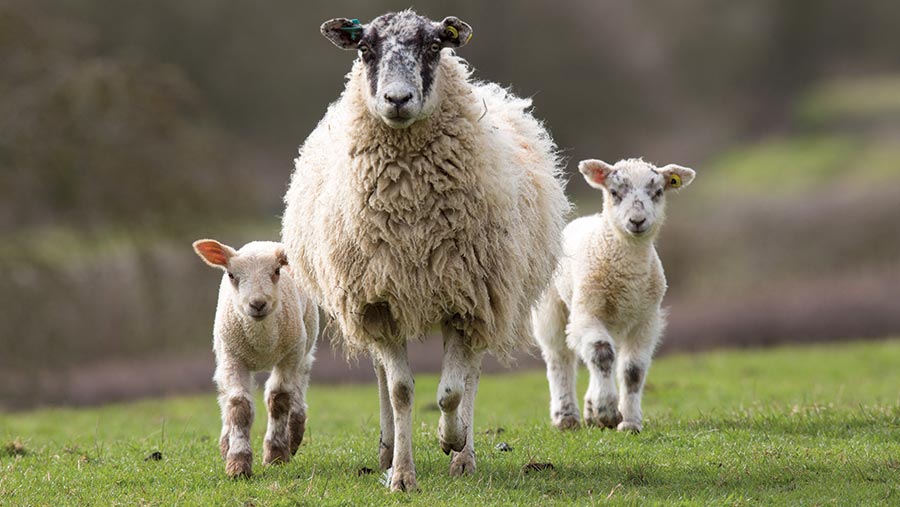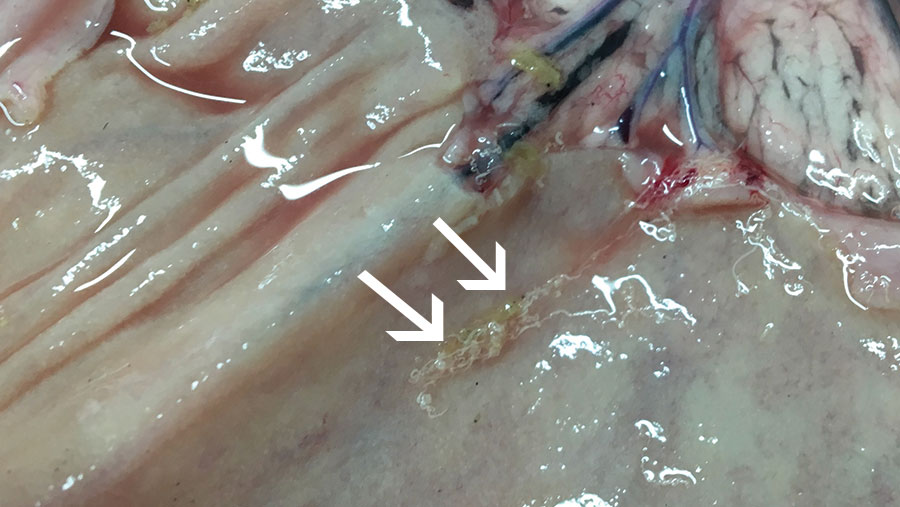Lambs born in early spring at risk of nematodirus
 © Tim Scrivener
© Tim Scrivener Nematodirus has been diagnosed in 12-week-old lambs in County Durham, killing two and resulting in mild, dark scour in others.
Postmortem examination revealed worms and eggs in the gut (highlighted in the image below).
Older lambs are at highest risk. Once lambs reach six weeks of age, they start ingesting more grass and parasites. This means lambs born in March and earlier could be at risk already.
Ben Strugnell, an independent vet who runs a postmortem business, Farm Post Mortems, explains why nematodirus is an issue not to be ignored and what you can do about it.
See also: 7 ways to help hit lamb growth targets

Why is it an issue?
Nematodirus battus has a lifecycle unlike other worms that affect lambs. Eggs laid last year by adult worms in ewes and lambs wait on pastures until spring when they hatch.
Treatment of ewes around lambing has no bearing on nematodirus.
Rain helps larvae hatch and migrate onto grass from eggs and helps worms persist longer, increasing risk. This usually happens during a spell of warmer weather (above 10 degrees), after a cold snap.
Worms can only be killed in the lamb. The biggest risk period is in the 10 days or so following a hatch. Worms are ingested and cause gut damage, which can be fatal.
Steps to take
- Time your treatment within 10 days of the hatch, which could be be 10 days after rainfall, if not already.
- For guidance, follow Nematodirus forecasts on the SCOPS (Sustainable Control of Parasites) website.
- Watch lambs around 6-12 weeks old for signs of scour, hollow sides and loss of bloom
- Any wormer should be effective – white drench is probably best, but talk to your vet
- Don’t wait for egg counts. Damage is often done before worms lay eggs.
- Carrying out a postmortem on the first nematodirus-suspected dead lamb saves on deaths and weight gain loss in the remaining lambs.
- Don’t treat too early. April-born lambs will typically not suffer infection until they are at least two months old.
- Diagnosis is important as coccidiosis has similar symptoms.
- For late (May) lambing flocks, the hatch will normally have been and gone (for example, worms hatch and die before being eaten).
Ben Strugnell is an independent vet in County Durham. Ben worked in mixed practice in North Yorkshire for five years, specialising in farm animals.
He then went on to work for the Veterinary Laboratory Agency in Thirsk, where he developed his skills in pathology and his belief that an accurate post mortem can diagnose the majority of diseases in farm animals and can prevent unnecessary losses and improve productivity on farm. He now runs the Farm Post Mortems service.
